There are many clever uses for climbers. I inherited a red rose, the name of which I've never discovered. It's feet are firmly planted at the back of a mixed border, taking up practically no space. The rose blooms once in June high up above a window on a wall covered with ivy. The dark red practically jumps off the wall in contrast to the dark green, shiny background of dense ivy. As the flower petals fall, the vine recedes into the background, and if it has any disease, black spot or mildew most likely among them, I don't know about it because the ivy acts as camouflage. And what would it matter, as the ivy and the rose have a happy marriage, their lives intertwined and compatible for more than 40 years.
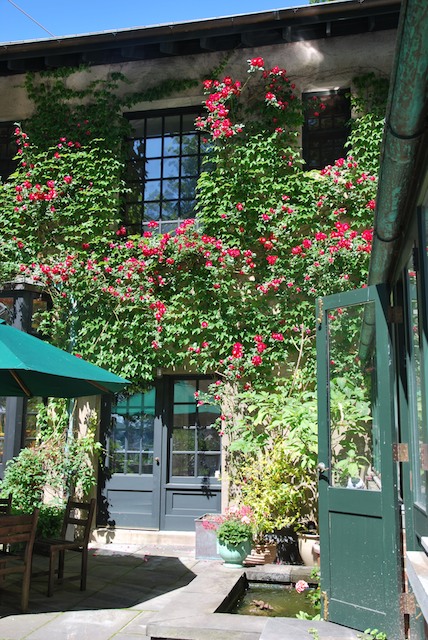
Many times, over the years when I passed a bare trellis, an empty pillar, a bald wall, an unattractive fence, I fancy I heard them crying out to me. The lament was always the same: "If only someone would adorn me with roses." The romance of climbing roses should not be underestimated.
If a climbing red rose hadn't come with our house, I might not have fallen so hopelessly in love with them. Once I realized the rose was using ivy as its trellis, hooking its thorns into the ivy as it grew, and it required little care, there was no stopping me. Now roses climb our doorways, arbors, porches, gazebos, fences, walls and even the basketball court. The roses also climb up other plants -- climbing hydrangea, trees and, of course, ivy. Over the last 20 years, I've added a couple dozen roses.
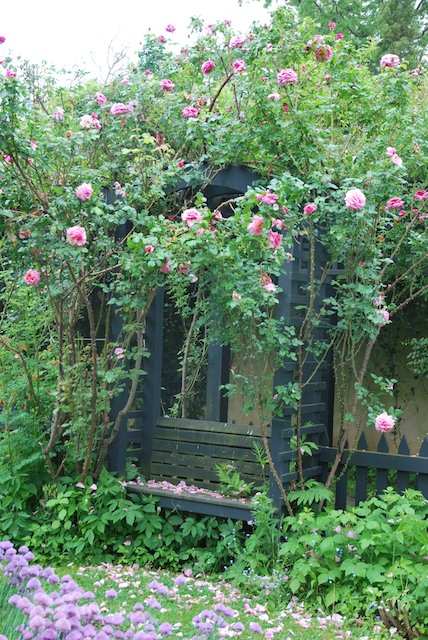
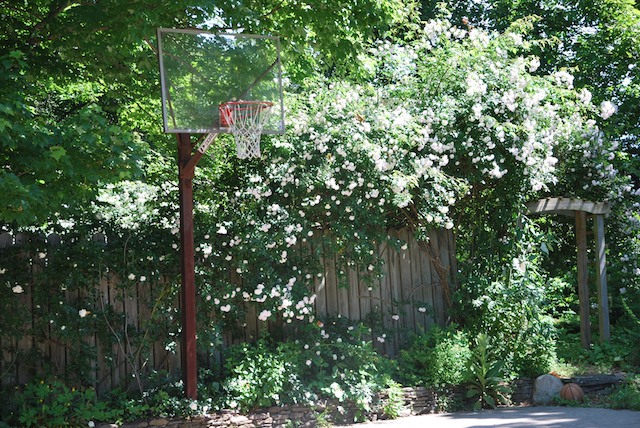
The impact of climbers, whether short or tall, is that they put the finishing touches on a garden. Plus, the garden appears larger when flowers bloom vertically. And the only drawback to climbing roses is their bare legs; I use their woody-stemmed canes as living supports for loose-limbed, delicate vines such as clematis, love-in-a-puff and sweet peas or I plant perennials or shrubs in front of them. Rose love shade on their roots and sun on their flowers.
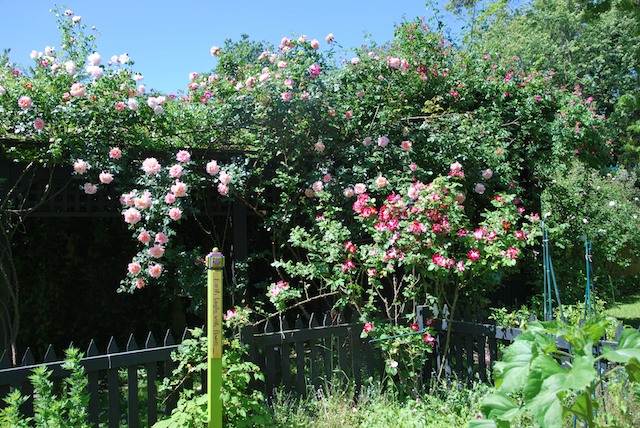

Most climbing roses sprawl, arch and creep upward, stretching their awkward canes. Some grow to 30 feet and beyond, 'Cecil Brunner' is one, while others, such as 'Aloha', 'Pat Austin' and 'New Dawn' grow only 8 to 12 feet tall. For the first few years, I rarely prune until they cover the area I have allotted to them. If they grow up and out of reach -- up a tree for instance -- I wish them well and wait for the tree to be alive with flowers. Shorter climbers I prune to shape the canes into a classic fan shape against a wall, or along a fence or trellis. With arched branches, more of the cane is exposed to the sun encouraging flowers to form at the node.
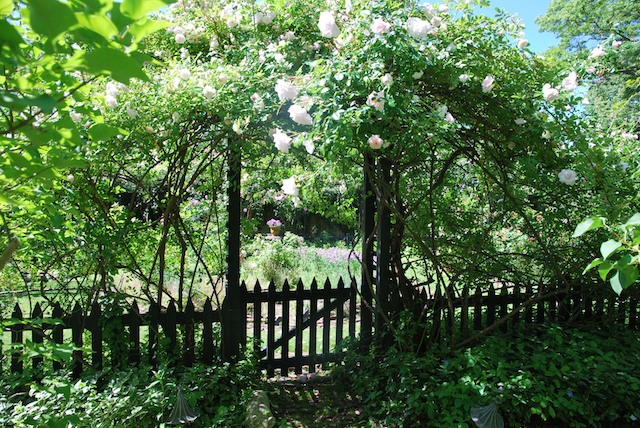
My approach to planting climbers is the more the merrier. They add so much to a garden -- fragrance, color, beauty and branches for birds to nest.